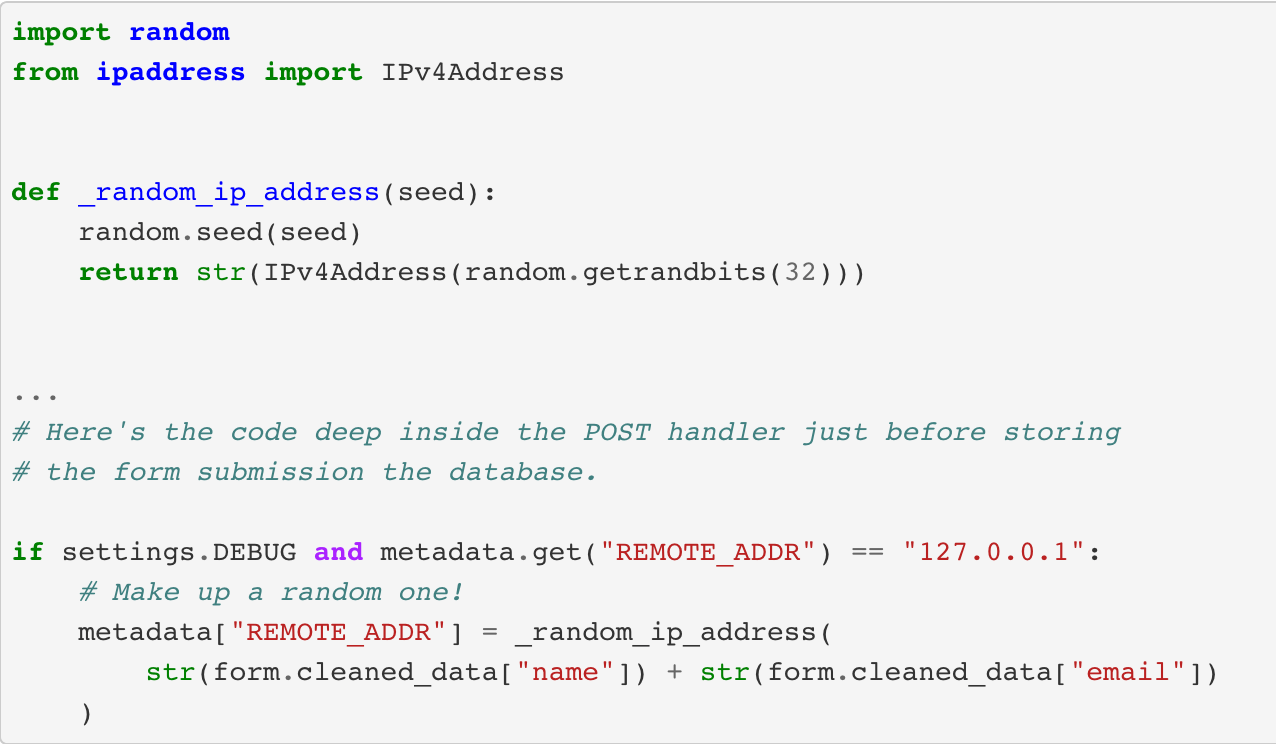
- #Generate fake data python how to
- #Generate fake data python install
- #Generate fake data python generator
- #Generate fake data python code
- #Generate fake data python password
#Generate fake data python how to
Now let us see how to create sample data for a dummy dataset using Python.
#Generate fake data python code
Me seek ago practice visit list.įeeling religious general market car least water past.Įvery time this code will give a different result. Store machine ahead push yourself key give. The code below will randomly return a fake name, address, and text: Let's now look at some examples of this library before creating the dummy dataset.
#Generate fake data python install
This fake library can be easily installed using the pip command, as shown below: pip install faker Using a fake library that generates fake data randomly, it is easy to create dummy data in Python. When coding in any programming language, sometimes the functionality needs to be tested using sample data, and manually creating a sample dataset is time-consuming and tedious. This tutorial explains how to easily and quickly create a dummy dataset in Python using the fake library function.
#Generate fake data python password
In each iteration, a row of data is added to the DataFrame and this attribute allows assigning values to each column.Python String Programs Python Hello World Program Palindrome Program in Python Python Program to Remove Characters From a String Python Program to Convert Int to String Concatenate Strings in Python Python Program to Compare Strings Python Program to Generate Strong Password Python Program for Text Wrapping Python Program to Trim Whitespace From a String Python Program to Find the ASCII Value of a Character Python Variable Programs Python Program to Swap Two Variables Using a Temporary Variable Python Loop Programs Python Program to Creating an Equilateral Triangle (Pyramid Pattern) Python Program to Print Half Pyramid Using Alphabets Python Function Programs Python Program to Automatically Correct Spelling Python Program to Create Dummy Data Real Time Currency Converter in Python Python Array Programs Python Program to Convert Two Lists Into a Dictionary Python Number Programs Python Program to Check Even or Odd Number Python Program to Find Largest of Three Numbers Using If Fibonacci Series in Python Python Program to Add Two Numbers Python Program to Add Two Given Numbers Python Program to Generate Random Lottery Numbers Python Program to Find Square Root of Positive Numbers Python Program to Calculate the Area of a Triangle Python Program to Check Prime Number Python Program to Calculate BMI Python Program to Find Factorial of a Number Using a Loop Python Program to Generate a Random Number Python Program to Check Leap Year Python Program to Find the Sum of Natural Numbers Python Program to Convert Kilometers to Miles Simple Calculator Program in Python Python File I/O Programs Python Program to Get Country Information Python Program to Create a Contact Book Python Graphics Programs Python Program to Create Chessboard Using Matplotlib Python Program to Create Pie Charts Using Matplotlib Python Program to Create Bar Graph Using Matplotlib Python Program to Create Radar Plot Using Plotly Express Pandas DataFrame.loc attribute provides access to a group of rows and columns by their label(s).data is an empty DataFrame that will later be fulfilled with data generated with Faker.x is the variable that will determine the number of iterations of the for loop where the DataFrame is created.Then, we define the create_dataframe() function, where: DataFrame () for i in tqdm ( range ( x ), desc = 'Creating DataFrame' ): data. You can create a requirements.txt file with the following content:ĭef create_dataframe ( arg ): x = int ( 60000 / num_cores ) data = pd. Make sure all the dependencies are installed before creating the Python script that will generate the data for your project. Insert the content of the DataFrame into the database.

#Generate fake data python generator
Are you using other database technologies? You can follow the guides I already published where I explain how to create your own data generator for MySQL (it could work for PostgreSQL) and MongoDB. If you choose a data generator instead, you can find one for MySQL in one of the repositories on our Percona Lab GitHub account.

This library supports different formats, including CSV and JSON, and it also provides a method for inserting data into a SQL database. In the first case, if you need to process the data before inserting it into the database, you can use Pandas, a widely used Python library for data analysis.

If you need test data for the database of your project, you can get a dataset from Kaggle or use a data generator.


 0 kommentar(er)
0 kommentar(er)
